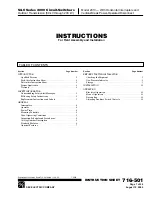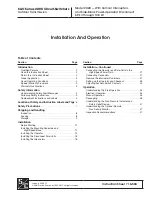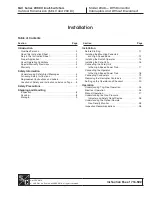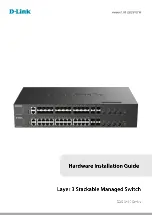
Introduction
1-2
1
Description of Software Features
The switch provides a wide range of advanced performance enhancing features.
Flow control eliminates the loss of packets due to bottlenecks caused by port
saturation. Storm suppression prevents broadcast, multicast or unknown unicast
traffic storms from engulfing the network. Port-based, protocol based and private
VLANs, plus support for automatic GVRP VLAN registration provide traffic security
and efficient use of network bandwidth. CoS priority queueing ensures the minimum
delay for moving real-time multimedia data across the network. While multicast
filtering provides support for real-time network applications. Some of the
management features are briefly described below.
Configuration Backup and Restore
– You can save the current configuration
settings to a file on a TFTP server, and later download this file to restore the switch
configuration settings.
Authentication
– This switch authenticates management access via the console
port, Telnet or web browser. User names and passwords can be configured locally or
can be verified via a remote authentication server (i.e., RADIUS or ).
Port-based authentication is also supported via the IEEE 802.1X protocol. This
protocol uses the Extensible Authentication Protocol over LANs (EAPOL) to request
user credentials from the 802.1X client, and then verifies the client’s right to access
the network via an authentication server.
Other authentication options include HTTPS for secure management access via the
web, SSH for secure management access over a Telnet-equivalent connection,
SNMP Version 3, IP address filtering for SNMP/web/Telnet management access.
MAC address filtering and IP source guard also provide authenticated port access.
While DHCP snooping is provided to prevent malicious attacks from insecure ports.
Access Control Lists
– ACLs provide packet filtering for IP frames (based on
address, protocol, Layer 4 protocol port number or TCP control code) or any frames
Virtual LANs
Up to 256 using IEEE 802.1Q, port-based, protocol-based or private VLANs,
and voice VLANs
Traffic Prioritization
Default port priority, traffic class map, queue scheduling, IP Precedence, or
Differentiated Services Code Point (DSCP), and TCP/UDP Port
Qualify of Service
Supports Differentiated Services (DiffServ)
Link Layer Discovery Protocol Used to discover basic information about neighboring devices
Multicast Filtering
Supports IGMP snooping and query, profile filtering, as well as Multicast
VLAN Registration
Switch Clustering
Supports up to 16 Member switches in a cluster
Tunneling
Supports IEEE 802.1Q tunneling (QinQ)
Table 1-1 Key Features
(Continued)
Feature
Description
Summary of Contents for DG-GS1550
Page 24: ...Tables xxx ...
Page 46: ...Initial Configuration 2 10 2 ...
Page 642: ...Command Line Interface 4 342 4 ...
Page 664: ...Index 8 Index ...
Page 665: ......
















































